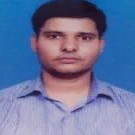International Journal of Image, Graphics and Signal Processing (IJIGSP)
IJIGSP Vol. 11, No. 7, 8 Jul. 2019
Cover page and Table of Contents: PDF (size: 3231KB)
A Comparative Investigation into Edge Detection Techniques Based on Computational Intelligence
Full Text (PDF, 3231KB), PP.58-68
Views: 0 Downloads: 0
Author(s)
Index Terms
Image processing, edge detection, ACO, GA, BPSO, DPSO, BSD500, F-Score
Abstract
Soft Computing becomes visible in the field of computer science. The soft computing (SC) comprises of several basic methods such as Fuzzy logic (FL), Evolutionary Computation (EC) and Machine Learning (ML). Soft computing has many real-world applications in domestic, commercial and industrial situations. Edge detection in image processing is the most important applications where soft computing becomes popular. Edge detection decreases the measure of information and filters out undesirable information and gives the desirable information in an image. In image processing edge detection is a fundamental step. For this, high level Computational Intelligence based edge detections methods are required for different images. Computational Intelligence deals with ambiguous and low cost solution. The mind of the human is the key factor of the soft computing. In this paper, we included Binary particle Swarm Optimization (BPSO), Distinct Particle Swarm Optimization (DPSO), Genetic Algorithm (GA) and Ant Colony optimization (ACO) techniques. The ground truth images are taken as reference edge images and all the edge images acquired by different computational intelligent techniques for edge detection systems are contrasted with reference edge image with ascertain the Precision, Recall and F-Score. The techniques are tested on 100 test images from the BSD500 datasets. Experimental results show that the BPSO provides promising results in comparison with the other techniques such as DPSO, GA and ACO.
Cite This Paper
Naveen Singh Dagar, Pawan Kumar Dahiya, "A Comparative Investigation into Edge Detection Techniques Based on Computational Intelligence", International Journal of Image, Graphics and Signal Processing(IJIGSP), Vol.11, No.7, pp. 58-68, 2019. DOI: 10.5815/ijigsp.2019.07.05
Reference
[1]L. S. Davis, “A Survey of Edge detection Techniques”, Computer Graphics and Image Processing (1975) 4, (248-270).
[2]D. Marr & E. Hildreth, “Theory of edge detection”, Proc. R. Soc. London B207, 187-217 (1980).
[3]T. Peli & D. Malah, “A study of edge detection algorithms”, Computer Graphics and Image Processing 20, 1-21 (1982).
[4]V. Torte & T. A. Poggio, “On edge detection”, IEEE Trans. Pattern Anal. Mach. Intell. PAMI-8, 147-163 (1986).
[5]N. S. Dagar, P. K. Dahiya, “Soft Computing Techniques for Edge Detection Problem: A state-of-the-art Review”, International Journal of Computer Applications (0975 – 8887) Volume 136 – No.12, February 2016.
[6]N. S. Dagar, P. K. Dahiya, “A Comparative Analysis of Edge Detection Algorithm and Performance Metric Using Precision, Recall and F- Score”, International Journal of Modern Electronics and Communication Engineering (IJMECE) ISSN: 2321-2152 Volume No.-6, Issue No.-6, November, 2018.
[7]H. Nezamabadi, S. Saryazdi & E. Rashedi, “Edge detection using ant algorithms”, Soft Computing (2006) 10: 623–628 DOI 10.1007/s00500-005-0511-y Published online: 1 August 2005 © Springer-Verlag 2005.
[8]J. Tian, W. Yu & S. Xie. "An ant colony optimization algorithm for image edge detection", IEEE Congress on Evolutionary Computation (IEEE World Congress on Computational Intelligence), 2008.
[9]P. Arbelaez, M. Maire, C. Fowlkes and J. Malik, “Contour Detection and Hierarchical Image Segmentation”, IEEE Transactions on Pattern Analysis and Machine Intelligence, volume 33, issue-5, May 2011.
[10]J. Tian & W. Yu., "Ant-Inspired Visual Saliency Detection in Image", IGI Global, 2011.
[11]M. Setayes, M. Zhang & M. Johnston, “Edge Detection Using Constrained Discrete Particle Swarm Optimisation in Noisy Images”, IEEE 978-1-4244-7835-4/11/$26.00 ©2011 IEEE.
[12]J. Kennedy & R. Eberhart, “Particle Swarm Optimization”, IEEE 0-7803-2768-3/95/$4.00 0 1995 IEEE.
[13]M. Braik, A. Sheta & A. Ayesh, “Image Enhancement Using Particle Swarm Optimization”, Proceedings of the World Congress on Engineering 2007 Vol 1, WCE 2007, July 2 - 4, 2007, London, U.K.
[14]A. Gorai, & A. Ghosh, “Gray-level Image Enhancement by Particle Swarm Optimization”, IEEE 978-1-4244-5612-3/09/$26.00c 2009 IEEE.
[15]S. Lee, S. Soak, S. Oh, W. Pedrycz & M. Jeon, “Modified binary particle swarm optimization”, National Natural Science Foundation of China and Chinese Academy of Sciences. Published by Elsevier Limited and Science in China Press 2008.
[16]I. Lovrek, R. J. Howlett & L. C. Jain, "Knowledge-Based Intelligent Information and Engineering Systems", Springer Nature America, Inc, 2007.
[17]N. Senthilkumaran, “Genetic Algorithm Approach to Edge Detection for Dental X-ray Image Segmentation”, International Journal of Advanced Research in Computer Science and Electronics Engineering (IJARCSEE), Volume 1, Issue 7, September 2012.
[18]S. M. Bhandarkar, Y. Zhang & W. D. Potter, “An Edge Detection Technique Using Genetic Algorithm-Based Optimization”, Pattern Recognition, Vol. 27, No. 9, pp. 1159 1180, 1994 Elsevier Science Ltd Copyright © 1994 Pattern Recognition Society.
[19]W. Fu, M. Johnston & M. Zhang, “Low-Level Feature Extraction for Edge Detection Using Genetic Programming”, IEEE TRANSACTIONS ON CYBERNETICS, Vol. 44, No. 8, august 2014.
[20]S. L. Gupta, A. S. Baghel & A. Iqbal, "Threshold Controlled Binary Particle Swarm Optimization for High Dimensional Feature Selection", International Journal of Intelligent Systems and Applications, 2018
[21]E. Cuevas, D. Zaldívar, G. Pajares, M. P. Cisneros & R. Rojas, "Computational Intelligence in Image Processing", Mathematical Problems in Engineering, 2013.

